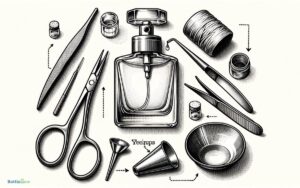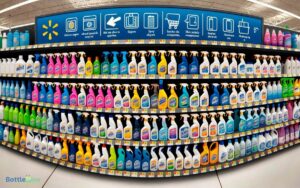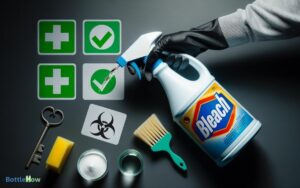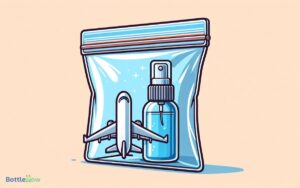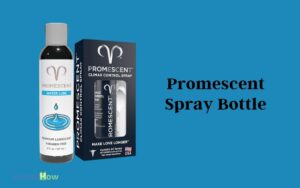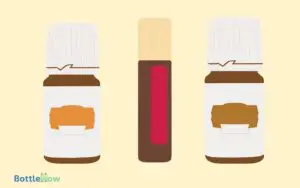Why Do Spray Bottles Leak? 9 Major Causes!
Your spray bottle may leak due to several factors. Faulty nozzle designs often result from poorly engineered mechanisms or substandard materials.
- Poor seal integrity, caused by defects or improper assembly, allows liquid seepage.
- Wear and tear from frequent use degrades internal components, leading to leaks.
- Incorrect assembly, such as misaligned threads or loose fittings, compromises the bottle’s efficiency.
- Additionally, material quality plays a significant role; low-quality plastics or rubber degrade faster.
- Pressure build-up, temperature changes, and user handling errors also exacerbate leakage.
Understanding these issues can help you identify and mitigate the causes effectively. Stick around for deeper insights.
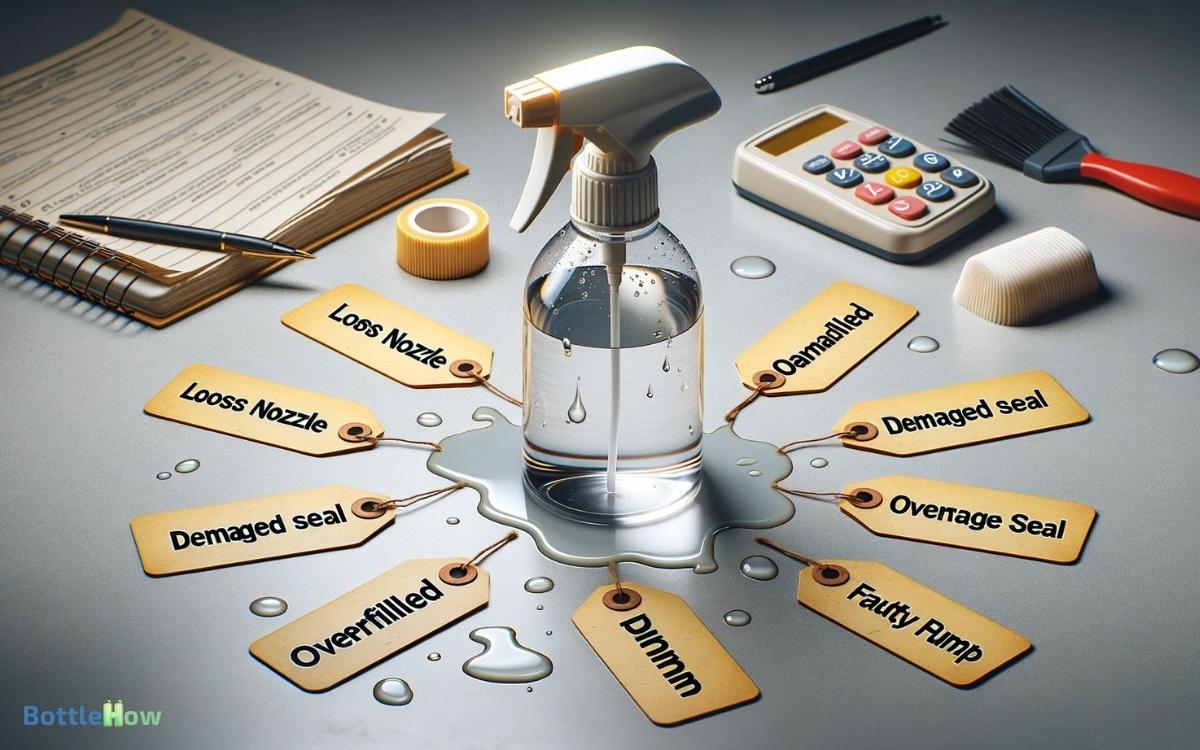
Key Takeaways
Faulty Nozzle Design
One primary reason spray bottles leak is due to a faulty nozzle design that fails to create a proper seal.
When the nozzle’s mechanism is poorly engineered, it can’t maintain the necessary pressure to keep liquids contained.
You’ll often find that inconsistencies in the nozzle’s threading or the use of substandard materials lead to gaps. These gaps compromise the seal, allowing liquids to escape.
Also, a nozzle with an inadequate spring mechanism fails to return to its original position, resulting in leaks. If you’re responsible for choosing spray bottles, prioritize those with precision-engineered nozzles.
Opt for designs that emphasize robust materials and precise manufacturing to guarantee a secure seal. This choice can greatly reduce leakage, enhancing your ability to serve others effectively.
Poor Seal Integrity
In addition to faulty nozzle design, poor seal integrity greatly contributes to spray bottle leaks by allowing liquid to escape through weakened or improperly joined components.
When seals between the bottle and sprayer aren’t secure, fluid can seep out, diminishing the bottle’s effectiveness. This often occurs due to manufacturing defects, substandard materials, or improper assembly.
A compromised seal can lead to wastage and frustrate users who rely on the bottle for precise application.
| Cause | Effect | Solution |
|---|---|---|
| Manufacturing defects | Leaks at joints | Quality control |
| Substandard materials | Seal degradation | Use high-quality seals |
| Improper assembly | Poor sealing | Ensure proper assembly |
| Weak seals | Liquid seepage | Strengthen seal points |
| Design flaws | Inefficient sealing | Redesign components |
Securing seal integrity is essential for efficient and reliable spray bottle performance.
Wear and Tear
Frequent use and exposure to harsh conditions can cause significant wear and tear on spray bottles, leading to diminished functionality and increased likelihood of leaks.
When you repeatedly use a spray bottle, the internal components like gaskets and seals can degrade over time. This degradation reduces their ability to maintain a tight seal, allowing liquid to escape.
Additionally, exposure to various chemicals can corrode these components, further compromising their integrity.
Mechanical parts like the trigger mechanism can also become less efficient with constant use, contributing to leaks. Regular maintenance, including cleaning and inspecting for worn parts, can mitigate these issues.
Incorrect Assembly
When you improperly assemble a spray bottle, you risk misaligned bottle threads and loose nozzle fittings, both of which can cause leaks.
Ensuring the bottle threads are correctly aligned and the nozzle is securely fitted is essential for preventing leakage.
Tighten the components carefully to maintain a proper seal and avoid operational issues.
Misaligned Bottle Threads
Check for misaligned bottle threads often result from incorrect assembly, leading to leaks and reduced spray efficiency. When you screw the nozzle onto the bottle, make sure the threads align perfectly. If the threads are not properly aligned, the seal may be compromised, allowing air to enter and disrupt the flow of liquid. This can be one of the common reasons why spray bottle stopped working, as it prevents proper suction and pressure buildup. To avoid this issue, always tighten the nozzle carefully and check for any signs of misalignment before use.
Misalignment creates gaps, allowing liquid to escape, compromising the bottle’s integrity. Look out for cross-threading, where the threads don’t properly engage. This not only causes leaks but also damages the threads, making future sealing difficult.
Applying moderate, even pressure while twisting can prevent cross-threading. If you notice resistance, unscrew and realign. Regular inspection of the threads for wear and tear ensures a tight seal.
Loose Nozzle Fitting
A loose nozzle fitting often stems from incorrect assembly, leading to inefficient spraying and potential leaks.
When you don’t securely attach the nozzle to the spray bottle, gaps can form, allowing liquid to escape.
This not only wastes the substance but also creates a mess, potentially causing safety hazards if the contents are chemicals.
To prevent this, make sure you screw the nozzle tightly onto the bottle. Double-check for any misalignment that might compromise the seal. If the nozzle doesn’t fit snugly, consider replacing it to maintain peak performance.
Material Quality
The quality of the materials used in spray bottles directly impacts their durability and resistance to leaks.
When you choose spray bottles made from high-grade plastics or robust metals, you minimize the risk of cracks and wear over time.
Inferior materials are more prone to degradation, leading to weakened seals and frequent leaks. It’s essential to understand the properties of different materials to make informed choices.
| Material Type | Characteristics |
|---|---|
| High-Grade Plastic | Durable, resistant to chemicals |
| Low-Quality Plastic | Brittle, prone to cracks and leaks |
| Stainless Steel | High durability, corrosion-resistant |
| Rubber Seals | Flexible, provides tight sealing |
| Inferior Rubber | Deteriorates quickly, causing leaks |
Pressure Build-Up
When excessive pressure builds up inside a spray bottle, it can compromise the integrity of the seals and lead to leaks.
You need to understand that pressure build-up often results from over-tightening the nozzle or exposure to high temperatures.
The increased internal pressure stretches and weakens the seals, causing them to fail. As a result, liquid escapes through these compromised areas.
To prevent this, make sure you don’t over-tighten the nozzle and avoid leaving spray bottles in hot environments, like in direct sunlight or near heat sources.
This reduces the risk of pressure-induced leaks, thereby guaranteeing the spray bottle functions effectively and serves others without causing a mess.
Proper maintenance and mindful usage are key to preventing pressure-related issues.
User Handling Errors
When you don’t tighten the lid properly, it can lead to leaks due to inadequate seal formation.
Overfilling the bottle can cause excess pressure, resulting in fluid escaping through the nozzle or seams.
Additionally, using an incorrect spray angle disrupts the internal pressure balance, contributing to leakage issues.
Improper Lid Tightening
Properly tightening the lid often results in spray bottles leaking, compromising functionality and causing potential messes.
When you fail to secure the lid correctly, it disrupts the seal, allowing liquid to escape through gaps. This not only reduces the effectiveness of the spray mechanism but also risks contaminating the surrounding environment.
To prevent this, make sure the lid is fully aligned with the bottle’s threading before tightening. Apply even pressure, turning until resistance indicates a secure fit.
Regularly inspect the lid and threading for wear or damage.
Overfilling the Bottle
Overfilling the bottle leads to excessive pressure build-up, causing leaks and reducing the efficiency of the spray mechanism.
When you exceed the recommended fill line, the liquid has less space to expand, resulting in undue stress on the internal components.
This pressure forces liquid through the seals, compromising their integrity and leading to leakage.
Additionally, an overfilled bottle makes it harder for the pump to create the necessary suction, reducing spray performance.
To prevent this, always adhere to the manufacturer’s fill guidelines. By filling the bottle correctly, you maintain the ideal pressure balance, ensuring the spray mechanism functions efficiently.
This attention to detail not only prolongs the life of the bottle but also enhances your service effectiveness.
Incorrect Spray Angle
Maintaining the accurate spray angle is crucial to preventing leaks and ensuring peak performance of the spray mechanism.
When you tilt the bottle excessively or use it upside down, the liquid can escape through the nozzle or the bottle’s seal.
This mishandling leads to:
- Maintain efficiency: The spray pattern becomes uneven, wasting more product.
- Seal compromise: Fluid pressure may cause the bottle’s seal to fail, leading to leaks.
- User frustration: Handling errors can make cleaning tasks more cumbersome and less effective.
To mitigate these issues, always keep the bottle upright and make sure the nozzle is aligned correctly.
Proper handling not only preserves the integrity of the spray mechanism but also improves the effectiveness of your cleaning efforts.
Temperature Changes
Temperature fluctuations can cause the liquid inside spray bottles to expand or contract, leading to potential leakage.
When the temperature increases, the liquid’s volume expands, creating internal pressure that forces the liquid out through any weak seals.
Conversely, colder temperatures make the liquid contract, resulting in a vacuum effect that can pull air into the bottle and compromise the seal integrity.
To mitigate this, store spray bottles in a stable, moderate environment. Avoid leaving them in vehicles or areas subject to extreme temperature variations.
By doing so, you’ll help maintain the spray bottle’s functionality and prevent leaks, ensuring reliable performance and a clean, efficient service for those you aim to assist.
Manufacturing Defects
Beyond temperature fluctuations, manufacturing defects can also contribute to spray bottle leakage. You might encounter issues during the production process that compromise the bottle’s integrity.
These defects can result in:
- Inconsistent thread patterns: If the threads on the bottle neck and the cap don’t align properly, it won’t seal correctly, causing leaks.
- Weak seals: Poor-quality gaskets or seals can degrade quickly, failing to maintain a tight closure.
- Faulty nozzle assemblies: If the nozzle components aren’t assembled accurately, they mightn’t dispense liquid uniformly, leading to drips.
Identifying these defects early is important for quality control and customer satisfaction. By ensuring robust manufacturing standards, you can minimize leakage issues, thereby providing reliable spray bottles that effectively serve your customers’ needs.
Conclusion
In the end, spray bottle leaks, much like Pandora’s box, reveal multiple underlying issues. From faulty nozzle design to poor seal integrity, each factor plays its part.
Wear and tear, incorrect assembly, and subpar material quality contribute considerably. Pressure build-up, user handling errors, temperature changes, and manufacturing defects also exacerbate the problem.
Understanding these can help you choose more reliable products, ensuring fewer leaks and more effective usage.

